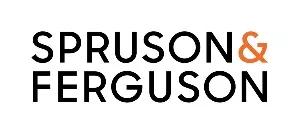- within Intellectual Property topic(s)
- in India
- within Privacy topic(s)
- with Senior Company Executives, HR and Finance and Tax Executives
- with readers working within the Banking & Credit, Healthcare and Technology industries
A side-by-side look at patent prosecution in Australia and New Zealand
While both jurisdictions share common roots, namely the Statute of Monopolies 1623, the Australia and New Zealand patent systems diverge in some aspects. This insight offers a practical guide, providing a side-by-side comparison of the key differences and similarities to help clients navigate the two patent systems with greater certainty.
What's the deadline for placing the application in order for Acceptance?
Australia
The final acceptance deadline is 12 months from the date of issuance of the First Examination Report.
There is no deadline for filing a response to the Examination Report, but in practice you'd need to file the response with enough time for the Examiner to consider it before the 12-month acceptance deadline.
Delays
IP Australia's Customer Service Charter Timeliness Targets indicate that Examiners should aim to issue any subsequent Examination Reports within 20 working days from receiving a correspondence relating to an application from the applicant.
Unlike New Zealand, however, the Australian Patent Office does not account for delays by the Commissioner in issuing a subsequent Examination Report, so the 12-month acceptance deadline is final and won't be extended even if there were any delays by the Office.
New Zealand
The final acceptance deadline is 12 months from the date of issuance of the First Examination Report (so called 'section 71 period').
There is a 6-month response deadline (extensible by 1-month with filing of a substantive response) within the 12-month acceptance deadline. Further Examination Reports come with shorter response deadlines.
Delays
The time to respond to an Examination Report may be extended by the Commissioner under section 230 if the application has not been put in order for acceptance due to a delay by the Commissioner and there were more than 20 working days remaining in the section 71 period at the time of filing the substantive response.
If a subsequent Examination Report is not issued within 20 working days following receipt of a substantive response by the applicant, this is considered a delay by the Commissioner. The initial 12-month acceptance deadline will be extended by the number of days of delay beyond the 20 working days. For example, if the subsequent Report is issued 30 working days after the date of receipt of a response, then the section 71 period will be extended by 10 working days.
What's the deadline for filing a Divisional Application?
Australia
A divisional application may be filed from a parent application at any time while the parent application is pending.
The deadline for filing a divisional application will depend on the fate of the parent application. Provided the parent application proceeds to acceptance, the deadline for filing a divisional application will be 3 months after the advertisement of acceptance in the Australian Official Journal of Patents.
In instances where an application is not placed in order for acceptance on or before the acceptance deadline, the deadline for filing a divisional application is the same as the final acceptance deadline.
Australian practice offers a mechanism to maintain pendency by "daisy-chaining" successive divisional applications throughout the 20 year term of the patent, which can impede third parties with commercial interests to enter the market.
New Zealand
The deadline for filing a divisional application is based upon the earlier of:
- the date upon which the parent application is accepted; and
- 5 years from the filing date of the complete application from which priority is derived.
If item (2) applies, then the divisional application must be filed along with a request for its official examination.
The 5-year statutory bar is a strong driver for Applicants to request early examination of New Zealand applications. If acceptance cannot be obtained within 5 years of the filing date, the divisional route then expires, and there would be no prospects of securing a patent.
This is a key limiting difference between Australian and New Zealand practices – our earlier article provides a deep dive into this subject.
What are the options for Expediated Examination?
Australia
The Australian Patent Office is a member of the Global Patent Prosecution Highway (GPPH) program.
IP Australia and the European Patent Office (EPO) are also running a bilateral Patent Prosecution Highway (PPH) pilot program.
Under the GPPH and PPH programs, while examination is accelerated, all claims in the Australian application must sufficiently correspond or be amended to sufficiently correspond to one or more of those allowed/ patentable claims of the overseas application examined by the offices of earlier examination (OEE).
As an alternative, there is an option to request "standard" expedited examination, reasons for which may include commercial and legal (infringement) considerations and if the invention is in the field of "cleantech". This requires no corresponding amendments to the claims and examination takes place at the same pace as under the GPPH or PPH.
New Zealand
Intellectual Property Office of New Zealand (IPONZ) is a member of the GPPH program.
IPONZ and the EPO are also running a bilateral Patent Prosecution Highway (PPH) pilot program.
Under the GPPH and PPH programs, while examination is accelerated, all claims in the New Zealand application must sufficiently correspond or be amended to sufficiently correspond to one or more of those allowed/ patentable claims of the overseas application examined by the OEE.
When assessing whether a patent application's claims "sufficiently correspond" to the claims accepted by a participating overseas office, IPONZ will consider Swiss-style claims to correspond to other formats of second medical use claims allowed overseas (remembering that methods of treatment of human beings are prohibited by statute in New Zealand – see below).
IPONZ also offers a "standard" expedited examination route on similar grounds to those offered by IP Australia. However, the bar to a successful request is set much higher by comparison with the criteria applied by IP Australia. For example, scenarios such as "you want to commercialise the disclosed product", that "expedited examination would assist in the commercialisation of the invention", or "concerned about a possible infringement threat that might exist" are not considered 'good and substantial' reasons by IPONZ.
Method of treatment claims
Australia
Claims directed to a method of treatment of human or non-human animals are allowable.
New Zealand
Claims directed to a method of treatment of non-human animals are allowable.
However, claims directed to a method of treatment of human beings by therapy or surgery are not allowed.
Diagnostic claims
Australia
Claims directed to a method of diagnosis that is performed directly or indirectly on the human body are allowed.
New Zealand
Claims directed to a method of diagnosis that is performed directly on the human body are not allowed.
However, claims directed to a method of diagnosis that is performed on human samples removed from the body, such as in vitro or ex vivo tests are allowed.
Swiss-style claims
Australia
Swiss-style claims defining the manufacture of a medicament, where the medicament is intended for a specified medical use in human or non-human animals are allowed.
New Zealand
Swiss-style claims defining the manufacture of a medicament, where the medicament is intended for a specified medical use in humans are allowed.
However, Swiss-style claims directed to non-human animals are not allowed.
Omnibus claims
Australia
An omnibus claim is prohibited unless its reference to the body of the specification is absolutely necessary to define the invention.
New Zealand
An omnibus claim, for example "An apparatus substantially as herein described with reference to the figures and/or examples", is allowed.
Nevertheless, care should be taken to ensure that prior art examples disclosed in the description are not also being claimed.
Further, when other claims are required to be restricted to address issues such as lack of support, novelty, and/or inventive step, omnibus claims may likewise require restriction.
Double Patenting
Australia
A double patenting objection prevents the granting of two or more patents having claims to 'the same invention'. Such objection will only stand if one or more claims of a patent application and one or more claims of a related patent, i.e., having the same priority date(s) and the same inventor(s), have identical scope. This objection is usually raised during the prosecution of a divisional application in light of its pending parent application or parent patent when there is significant overlap between the claim sets.
Under Australian practice, claims of a divisional application can be broader than and can even wholly encompass the claims of the parent case, and vice versa, providing their scope is not identical. Although if the difference in scope is inconsequential, the claims may still be considered 'the same invention'.
Double patenting is not a ground of invalidity for an accepted application or granted patent (that is, it cannot be relied on for invalidation during an opposition or a revocation proceeding) – it can only be raised to refuse the grant of a related application.
New Zealand
New Zealand's approach to double patenting has been revised in recent years and is more aligned with the Australian practice, where this type of objection can only be triggered when a patent application includes one or more claims for 'substantially the same matter' as that already accepted in a related application, and vice versa.
The phrase 'substantially the same' is defined as 'essentially the same', 'the same but for minor unimportant details', and/or 'not substantially different'.
Under the revised approach, claims that are wholly within the scope, or wholly encompass the scope of a related accepted application (but do not have substantially the same scope) should be allowable and should not be considered to have prohibited overlap.
The 'double infringement' test has been established for assessing prohibited overlap:
- Would an infringement of the claim(s) of the first application also be an infringement of the claim(s) of the second?
- And would an infringement of the claim(s) of the second application also be an infringement of the claim(s) of the first?
If the answer to both questions is yes, then the claims are considered to be 'for substantially the same matter' and prohibited overlap is present.
Like Australia, double patenting is not a ground for invalidity of an accepted application or a granted patent.
Best Method
Australia and New Zealand
In Australia and New Zealand, the patent specification must disclose the 'best method' that is known to the applicant of performing the invention at the time of filing the complete patent application. This requirement no longer includes at the time of filing a divisional application, which has been the case since 2018 in Australia.
The best method requirement is unique to Australia and New Zealand, where in many jurisdictions it never existed or has been abolished. It is a question of fact, concerning what the patentee (or its predecessor in title) knew at the time of filing the complete specification (including PCT filing) and such fact is not generally available to an Examiner. Thus, best method challenges most often come up during an opposition or court proceeding.
There is no requirement for the complete specification to include the words 'best method' or the like. If the best method of working the invention is disclosed in the complete specification at the time of filing, even its amongst several other possibilities, the requirement is fulfilled.
Excess claim fees
Australia
For applications where examination has been requested after 1 October 2024, excess claims fees will apply if the number of claims at issuance of the First Examination Report exceeds 20.
Excess claims fees are calculated based on the number of claims at issue of the first Examination Report, and again at acceptance (if the number of claims increases beyond those at the first Report at any point during examination).
The excess claims fee is AU$125 per claim for 21 to 30 claims, and AU$250 per claim for more than 30 claims and beyond.
The fee will be payable within 1 month from the date of the first Examination Report. If this fee is not paid within 1 month, the application will lapse.
The application can only be revived if the payment of the fee is made prior to the final date of acceptance (which is 12 months from the date that the first Examination Report was issued).
New Zealand
Excess claims fees are payable at acceptance if 30 or more claims are pending at any time after examination is requested.
The excess claims fees are calculated based on the maximum number of claims pending during examination, and is NZ$120 for every fifth claim over the first 25 claims.
In Australia and New Zealand, each multiple dependent claim counts as a single claim so no additional official fees are payable for having multiple dependencies in a claim.
How we can help
The above exemplifies some of the key differences and similarities in the Australia and New Zealand patent systems. Important differences between the two jurisdictions require vigilant and proactive management.
Spruson & Ferguson Patent Attorneys employ specialised knowledge of Australia and New Zealand patent law and procedures to effectively manage our clients' corresponding applications across these two similar yet distinct jurisdictions.
Reach out to the team with any further questions or for assistance.
The content of this article is intended to provide a general guide to the subject matter. Specialist advice should be sought about your specific circumstances.



